By Manuel Salgado, Mexican
One of the goals was finally met. After several cultural events that showcased interesting facts about diverse cultures that form the Nanyang MBA, from the tasty Korean BBQ, Chinese full-of-lights Mid-Autumn festival, the very rhythmical Indian Bollywood dance, or the traditional songs of ‘German’ Christmas, it was time for the Mexican MBA students, like me to share a little about our culture.
The excuse was perfect: September 16th 2012, the 202th anniversary of the Mexican Independence Day, is around the corner. With a short time for preparation but the best efforts, myself and Allan Perez (Mexican, Exchange Student from EGADE MBA), organised a party gathering among senior students (graduating batch) and new cohort and also with the Exchange Students. The reception to this party was very good as the slots were full in only a couple of days. For me and Allan, the celebration was indeed the best opportunity not only to show a little about our culture, but also to thank all the support and kindness we have received from our Singaporean and foreign colleagues over all.
More than 40 of us, a very diverse group, attended the fiesta (or feast in English!): Singaporeans, Filipino, French, Chinese, Thai, Japanese, German, American, Spanish, among other nationalities. The first surprise they encountered was the possibility to adopt a Mexican Name. John Rae Philip (Filipino) and Martin Schmidt (Austrian, Nanyang- St. Gallen Double Masters) helped the visitors pick their name based in the translation or adopt one that they liked. They provided a Certificate of Name Adoption to each of the attendees. For example, Hao Wu (Chinese, Nanyang Essec Double Masters) decided to pick Señor Gabriel, which is the name of one of the archangels that he likes. Harutaka Ichinoki (Japanese,) chose Don José as it is easy to remember.
After the name adoption, participants indulged in Mexican food and beverages. For beverages, it was possible to try Michelada, a beer cocktail that includes lemon, salt, Maggie sauce and chili. For food, they tried Carne Asada (roasted beef) with Tortilla, a combination more popularly known as Taco in Mexico, the most popular food. They had the possibility to accompany the food with a large selection of salsas, from non-spicy to very spicy, and of course, including in that selection the famous avocado sauce, Guacamole. Our Vegetarian peers had also the chance to try dishes that did not include meat.
Tortilla chips, quesadillas and chicharron (fried pork skins!) were also part of the celebration. Some of our classmates were decisive and willing to help out- Steven Quimby (American) and Jaewon Park (Korean) provided a key support in the grill section and showed their BBQ expertise.
For the event closure, two (2) traditional Piñatas were brought in and those who wish to play this game were blindfolded and asked to hit the Piñata with a stick. The reward, when the Piñata was hit and broken is an avalanche of assorted candies- we had fun as we competed among ourselves to try to get as much as possible. Vida Zhou (Chinese,) and Aditi Jain (Indian,) were the first ones brave enough to try the Piñata. Overall, we have fun during this enjoyable evening- eat, chat and play while celebrating Mexican culture. Viva Mexico!


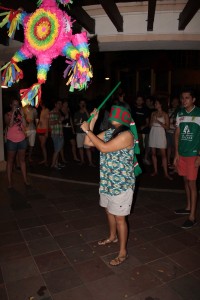


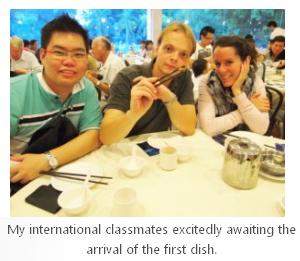
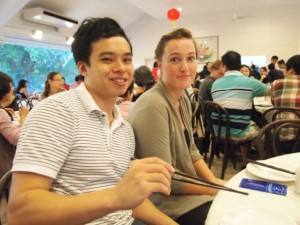
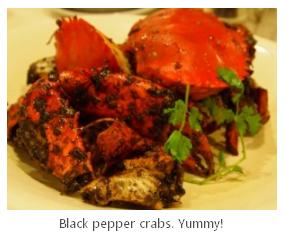
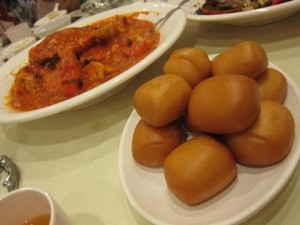
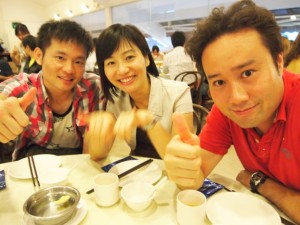



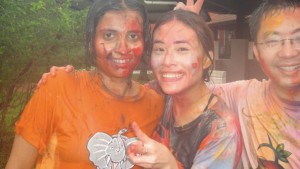
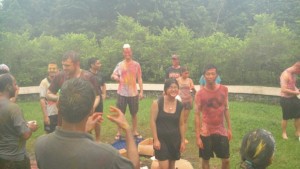



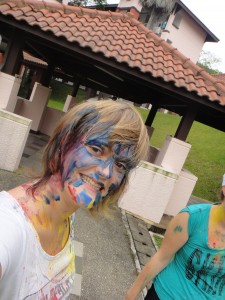

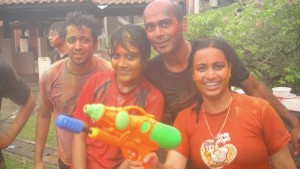
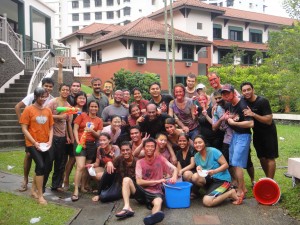
You must be logged in to post a comment.